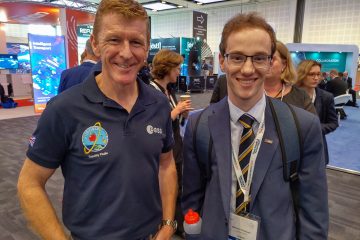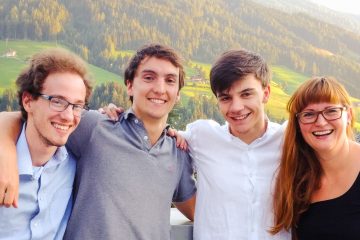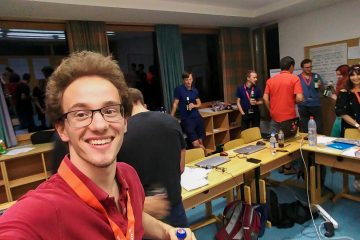Today in Alpbach, we had the final lectures of the Summer School. While it was great to be able to crack on with lots more work before our afternoon Preliminary Design Review (PDR), it was also somewhat sad to think that we wouldn’t have any more leading experts from across Europe telling us all about their fields. Of course many of the tutors will remain on hand for the rest of the Summer School, but we now have the feeling that we’re more on our own, with no more lectures to fill us with useful knowledge.
These final lectures focussed on what we can learn from Earth-based observations; sample curation, including handling, analysis and storage; and lessons learned from actual small body missions such as Philae and MASCOT. The lecture on sample curation was particularly interesting, as it opened our eyes to a whole large aspect of the mission that many of us had not previously considered. We realised how involved the curation process is and the extreme level of care that will have to be taken with the priceless asteroid samples from our mission.
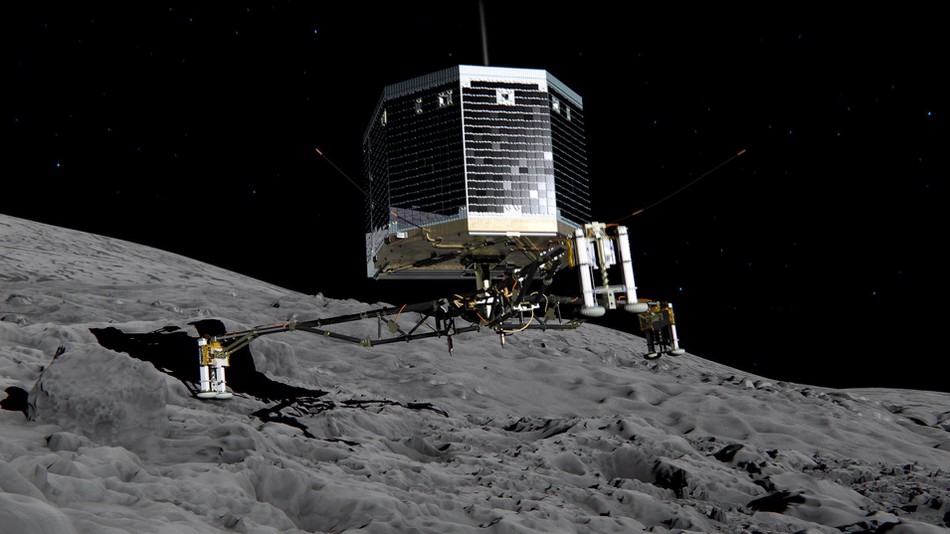
Artist’s impression of Philae landing on Comet 67P/Churyumov–Gerasimenko
Although we intended to have lunch after the final lecture, this ended up slipping us by as we were so focussed on preparing for the PDR. Although we had had the science review on day 4, this felt like the first major milestone in the development of our mission. We knew that the judges wouldn’t hold back with their (constructive) criticism, so it was important to do as good a job as we could in the final few hours before the review at 16:30.
In the rush to do as much as we could, the time flew by, and soon the deadline was upon us. The tutors gathered in our team room and we began our presentation of our mission, called SPARTA (SamPle And ReTurn Alpbach). Firstly we set out some of the overall questions that we aim to answer, such as how the early solar system evolved and what its chemical composition and spatial distribution were like.
Next we described the selection criteria for our target, such as being in an orbit similar to that of the Earth to minimise the delta-v needed for the orbital transfer. We described what D-type asteroids are and then announced our chosen target body: the asteroid 1993 HA, a 300-600 m asteroid approximately 1.278 AU from the Sun.
We then dove more deeply into each of our science requirements and described the instruments required on the orbiter and lander to fulfil each of these, before we moved onto wider mission analysis topics. These included outlining each of the mission phases, such as asteroid rendezvous, or reentry back at Earth.
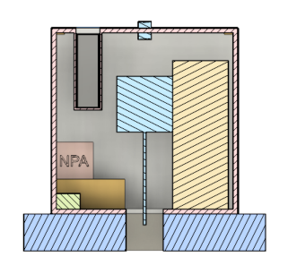
Cutaway render of our lander showing the crushable structure, drill, sample return canister and instruments
Our PDR then showed the tutors the details of the different mission phases, with particular attention paid to the landing, sampling and sample canister return processes as these would be most technically challenging. Reentry was also described in detail, with plots from an optimisation procedure and of flight path angle over time shown among others.
While our PDR presented a fair bit of detail, it became clear from the tutors’ questions that we still had to clarify the requirements flow across our mission. The science questions needed to be solidified and we had to show how this generated particular science goals, such as studying D-type asteroids rather than another body type. From these goals, science requirements, such as the depth and mass of sample that would be required, can be derived. These need more detail in our case, particularly as they form the basis of the engineering requirements around which the engineering team build the rest of the mission.
Tomorrow is our mission’s Final Design Review (FDR), so we will be working hard to ensure that all the issues with our science and technical cases are ironed out before then. This will be the last industry-style review of our mission before the final presentation to the rest of the Summer School cohort on Thursday.
All my tweets about the Summer School can be found under #AlpbachSummerSchool and my blog posts about it are all in the Alpbach category.
